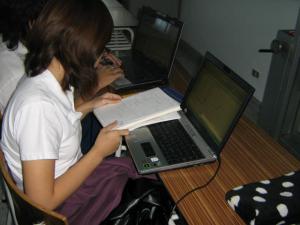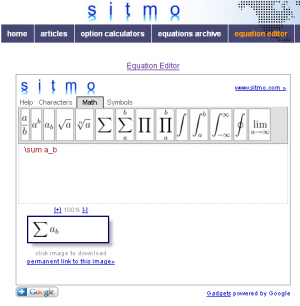 As secondary mathematics becomes more and more about how you find the solution to a problem and less about what the correct answer is to a problem, it becomes easier to justify assessing students using a project.
As secondary mathematics becomes more and more about how you find the solution to a problem and less about what the correct answer is to a problem, it becomes easier to justify assessing students using a project.
One immediate advantage of doing projects in high school mathematics is that students learn valuable job related skills, such as formatting documents properly, technical writing, and communication skills. It is arguable that these skills are more important than the actual mathematics content we teach.
So now it becomes a question of helping students produce high quality projects that are worth your time to grade. We as professionals need to come up with some strategies for helping our students through these projects, because if done correctly, they can be far more difficult than our most challenging topics in mathematics.
First, when assigning the project, it is helpful if you have taken the time to do it yourself. Make sure that whatever work you are planning on giving the kids has a clear solution, and that the students in your class are capable of finding it. This does not mean that your project can’t be open-ended, but students need to have some measure of success when working on the project. I have made the mistake in the past of assigning a project which was much too difficult for my 10th grade students to do, and regretting it in the end. No real learning comes from doing a project which is beyond your talent to complete.
The next thing to consider when assigning the project is the clarity of your instructions. The first few projects you assign should be pretty doable by the students by following your instructions verbatim. Give the students a formalized structure to follow. It is a good idea to even give the students a template to follow. This does not mean a ‘fill in the blanks’ style assignment, but more like giving them the following structure.
Sample project structure
You also need to give the students the same assessment criteria you will be using to grade their projects before they start working on them. A rubric is a handy way to grade a project, so give the students a copy of the rubric you will use. Take the time to go through the rubric, and if the project is one you have done before you might even be able to show some examples from a previous year.
Now you need to set aside at least a couple of lessons during class for the students to work on their projects. Once the students have started on their projects and have some work, they will want to finish the projects. They will come to you and ask for more help, but you have to give them enough time to get ‘hooked’ into the project. Sometimes what I will do is have students collect data on some phenomena in groups, and then they work on the calculations, conclusion and evaluation of their projects individually.
Give the students enough time to finish the projects before expecting them back. You can have a project that takes the students three weeks to finish, if you provide daily reminders of the tasks that need to be completed. You may also want to set goals for the students to reach and remind them what stage of the project they should be at in order to complete it on time.
If the students turn in work, and it is not as high quality as you would like, take the time to analyze the work as a class. Maybe photocopy some of the best and worst work, making sure to obscure who’s work it is (retype it if you have to) and hand it out to the students. Discuss with the students what worked and what did not. Let the students redo their assignment if they have to and turn it back in. Remember that your objective is to have the student capable of producing a high quality piece of work.
Once you have done a few projects, they become easier. The first few projects I did were nightmares to supervise, and what the students turned in ended up not being very good. After 7 years of having students do multiple projects a year in mathematics, I now have high expectations for what the students will produce and how to help them achieve this level of work.
Here are some specific ideas you can use in your classroom for projects and the topic from mathematics they cover.
Functions and Logos – function transformations
Aunt Dot – arithmetic and geometric sequences
Threes and Ones – number patterns
 Google has a lot of cool tools they have been working on recently, and I enjoy trying them out. Once in a while they come up with a tool you can use in your classroom right away.
Google has a lot of cool tools they have been working on recently, and I enjoy trying them out. Once in a while they come up with a tool you can use in your classroom right away. The second solution is to use one of the online services offered to use the Latex document format and an elaborate system to convert the Tex documents produced into equations. The one I like best right now is offered by
The second solution is to use one of the online services offered to use the Latex document format and an elaborate system to convert the Tex documents produced into equations. The one I like best right now is offered by  As secondary mathematics becomes more and more about how you find the solution to a problem and less about what the correct answer is to a problem, it becomes easier to justify assessing students using a project.
As secondary mathematics becomes more and more about how you find the solution to a problem and less about what the correct answer is to a problem, it becomes easier to justify assessing students using a project.